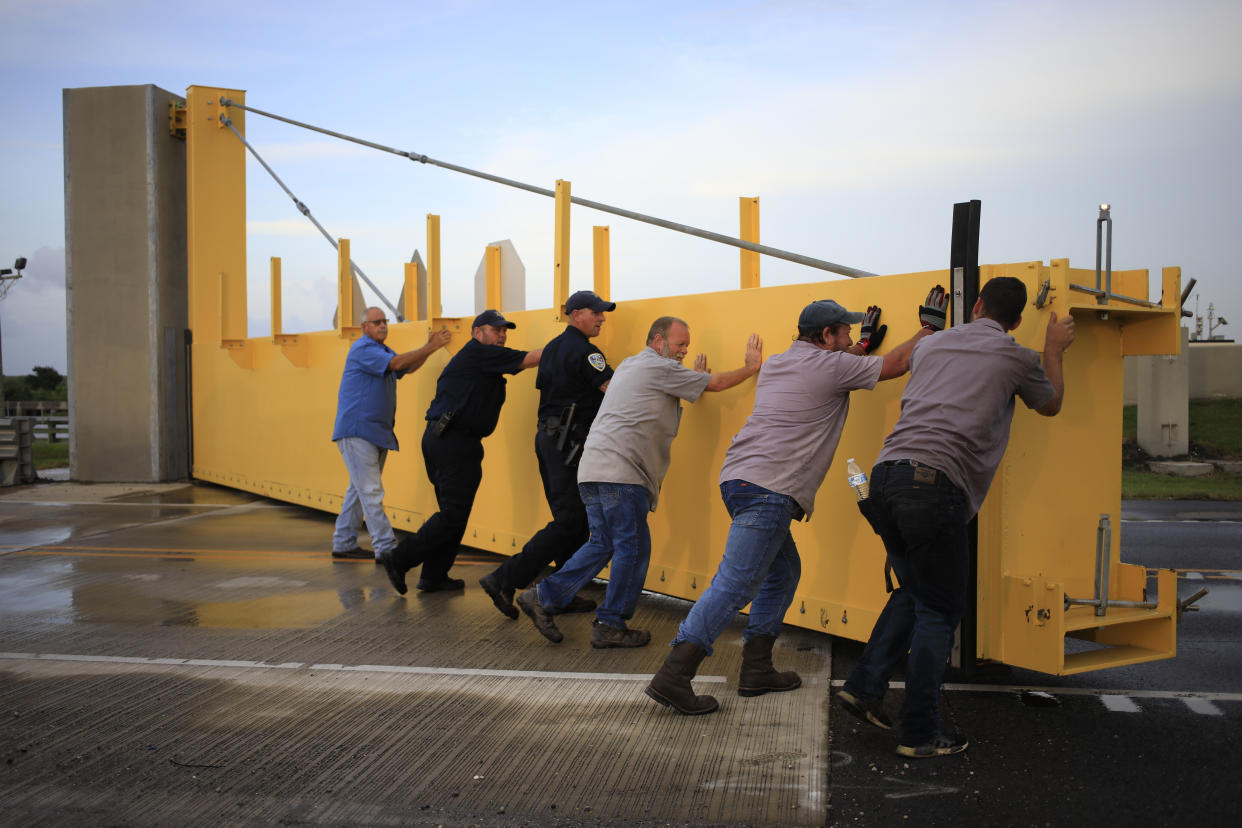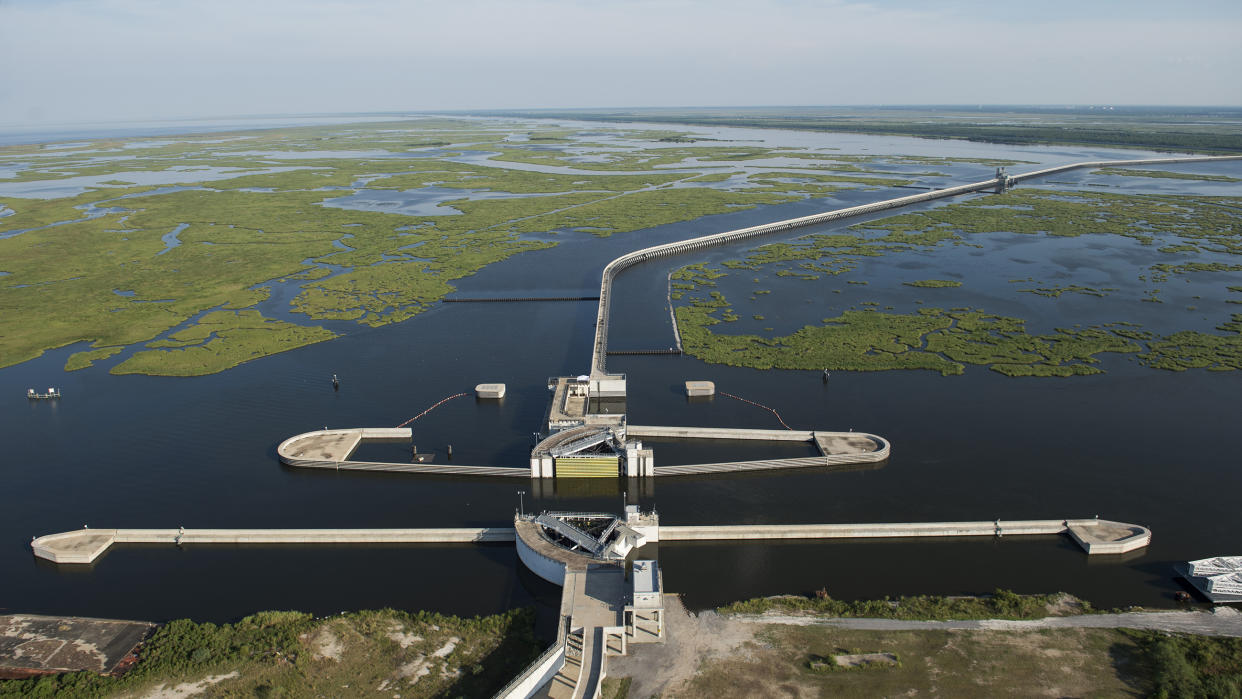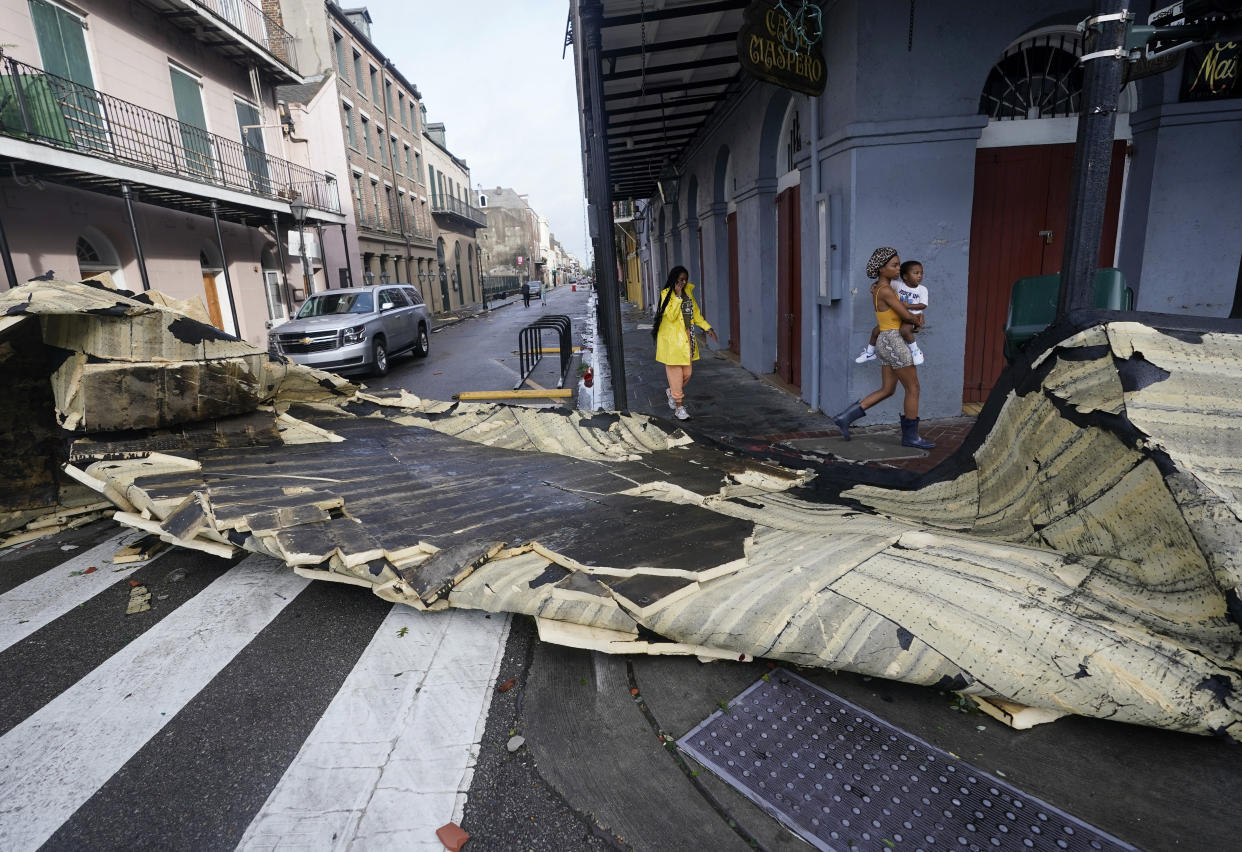New Orleans’s improved levees hold amid Ida’s onslaught, but the changing climate will continue to challenge them
Hurricane Ida drew instant comparisons to Hurricane Katrina this week, as the Category 4 storm made landfall in Louisiana on Sunday, 16 years to the day after Katrina breached New Orleans’s levees and floodwalls, ultimately killing more than 1,800 people in its winds and floodwaters. More than 50 levees were breached, flooding about 80 percent of New Orleans.
But the newly rebuilt levees mostly held firm this week, despite facing the fifth strongest hurricane ever to hit the U.S. mainland.

“It was designed to withstand the effects of a hurricane like Ida. It’s performing exactly as designed. We didn’t have any overtopping or any breaching,” said Kelli Chandler, regional director of the Southeast Louisiana Flood Protection Authority-East, which covers St. Bernard, Orleans and Jefferson parishes.
“Although we did have some wind damage and extensive power outages, we did not experience any flooding, so that’s a huge win for this particular region.”
Louisiana Gov. John Bel Edwards echoed that sentiment while speaking to the press on Monday.
“We don’t believe there is a single levee anywhere now that actually breached or failed,” he said. “There were a few smaller levees that were overtopped to a degree for a certain period of time.”

The fact that the levees mostly held was not mere luck. The federal government spent $14.5 billion on levees, pumps, seawalls, floodgates and drainage in New Orleans and its surrounding areas, the Associated Press reported, with most of that work complete.
The levee system was reconstructed and completed about 15 years after Katrina, just in time for storms like Hurricane Laura, a deadly Category 4 from last year. “We had a record number of storms last year, and the system performed well. We had a very intense hurricane with Ida, and the system has continued to perform as designed,” Chandler told Yahoo News.
The Army Corps of Engineers created a plan to strengthen its Hurricane and Storm Damage Risk Reduction System, which aims to reduce the risks of the most intense storms that have a 1-in-100 chance of occurring in any given year.

The current system is a 130-mile ring that can curb a storm surge of 30 feet. While that’s better protection than New Orleans has had in the past, it’s not designed to completely stop every storm surge. Heath Jones of the Army Corps of Engineers’ New Orleans District told the AP that the rebuilt storm infrastructure is “designed to overtop in places, with protections against worse damage, including armoring, splash pads and pumps with backup generators.”
The success of the levees draws attention to broader infrastructure efforts. Congress is currently debating a massive infrastructure deal that would be the largest federal investment into infrastructure in more than 10 years, the New York Times reported, opening the door to not only roads and bridges, but also more funding for the nation’s power grid and projects related to the warming climate.
But the levees are only one piece of the storm defense, and Hurricane Ida still brought deadly 150 mph winds and flash floods across Louisiana and Mississippi, killing at least four people and knocking out power for more than 1 million residents.

Storm infrastructure will require even more work in the coming years, as human-caused climate change continues to make storms like Ida wetter and more intense. Rising sea levels also pose greater threats to low-lying cities like New Orleans.
Tulane University history professor Andy Horowitz, author of “Katrina: A History, 1915-2015,” told NPR that it was “unequivocally great news” that the levees mostly held up against Ida’s onslaught. But Horowitz noted that New Orleans may not be as safe from future hurricanes.

“It does not mean that the lesson of Hurricane Ida is that metropolitan New Orleans has adequate hurricane protection. It means it had adequate protection against this storm surge,” Horowitz said. “As the system is challenged by stronger and more frequent hurricanes. I think many experts are very concerned about the rather low level of protection that New Orleans has.”
Louisiana has 3,221 miles of levees that are an average of 65 years old.


